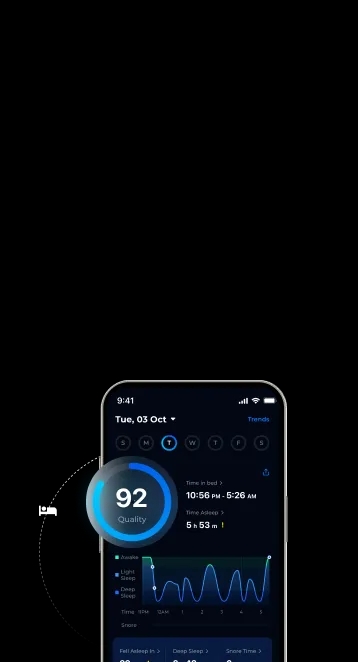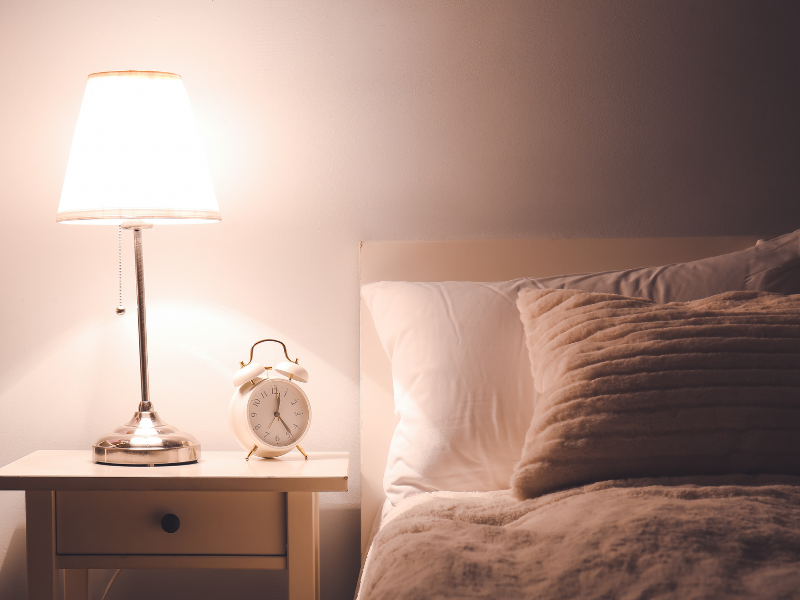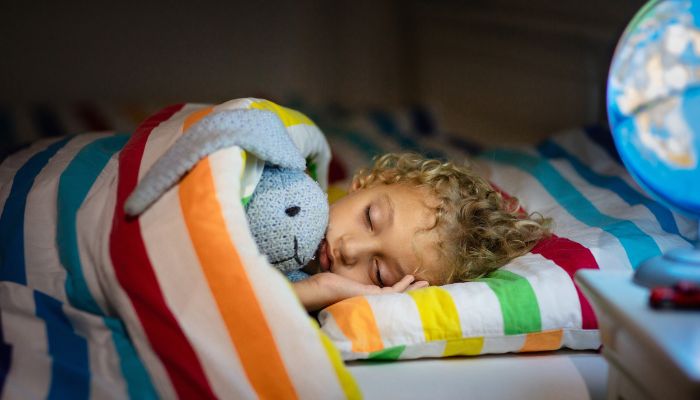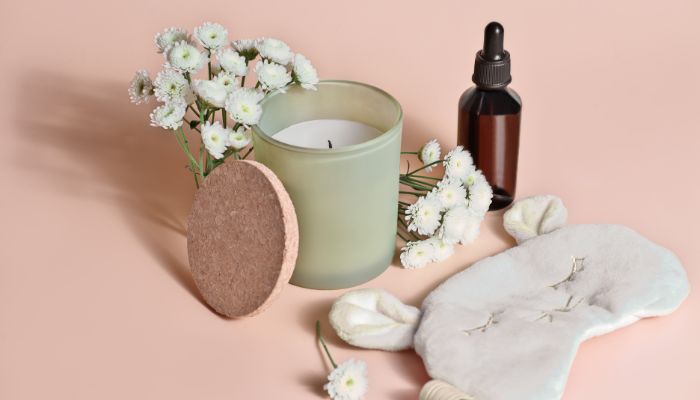


Are you facing problems while sleeping and have tried all the heck out to get a quick, peaceful nap? But did you look for the best color of light for sleep?
Yes! Sleep cycle and light color walk side by side. Where the wavelength of some colors promotes sleep, others disrupt it more than anything.
So, to find out why warm colors are the best light color for sleep and which colors to avoid, dive into the next section.
We are quite familiar that the sleep-wake cycle is controlled by the production of melatonin hormone. Studies claim that although the melatonin hormone level starts to rise at night as exposure to daylight finishes, the artificial lights you encounter have a direct effect on regulating or suppressing the production of melatonin.
Research in 2017 showed that there are specific photoreceptors in the eye. These receptors are sensitive to light wavelengths between 450 nm to 480 nm- in short, to blue light.
Similarly, the photoreceptors have a positive affinity for warm light falling in the range of 620 nm to 750 nm. These lights lull us to sleep quickly by producing melatonin.
Light bulb colors that are best for sleep are:

The red light spectrum stimulates the production of melatonin hormone, and various types of research support it.
A study done in 2012 studies the effect of exposure to red light therapy on 20 females for 30 minutes for two weeks. After 14 days, researchers found that the melatonin level was high in participants who received red color of light compared to those who didn’t.
Moreover, direct experiments on humans aren’t mostly favored; instead, they are performed on rodents and mice. So, a recent experiment on mice showed that red light under 10 lux or more is known to increase melatonin and induce sleep.
Besides red light, Amber light has a soothing effect on the human mind. Thus, it helps to improve mood and promote melatonin secretion.
Opting for Amber light protects the eyes from the harmful effects of high-level blue light exposure we have. It has a wavelength between yellow and orange lights. That is why dim Amber light at night can positively affect our sleep quality. Red light and amber light are probably the best night light colors you can choose.
Although no research is available yet, a rough estimate by combining the color and wavelength is that pink should also be a calming light color for sleep. Potentially speaking, it is a combination of red and purple, both of which are warm colors. Therefore, pink light helps in catching forty winks, too.
Surprisingly, where research shows that warm colors, particularly red, are very beneficial in the early onset of sleep, some researchers claim that the colors that help with sleep vary from person to person depending on individual taste.
A study done in 2017 showed the effect of different lights on participants, and it was found that users who were
Now that you are up with which light is best for sleep let’s have a closer look at some of the benefits light may have on human health. These include
Moreover, to visualize the effects of light color on your sleep, you can download a sleep tracker. With hundreds of them available in the digital arsenal, ShutEye® is an easy and trusted app. It analyses your sleep cycle and gives daily reporting that you can compare to see improvement.
Just like there are best color lights for sleep, there are also some worst color lights for sleep that turn off the sleep cycle and suppress the stimulation of melatonin. These include:
That is why people who use mobile or electronics before sleep often face difficulty catching sound sleep. The blue light of the screen negatively impacts the sleep cycle, leading to restless nights.
Surprisingly, where the red light is equally good for babies and children sleeping, the scenario of yellow light was totally opposite. Researchers claim that exposure to yellow color light suppresses the melatonin level in children. However, no such suppression was found in adults.
However, exposure to bright light for less than 15 minutes does not affect the sleep cycle.

Speaking of colors, if you’re experiencing any issues with falling asleep, you can try our different colors of sleep noises. ShutEye® has a great variety of white noises, pink noises, brown noises, and more. You can mix and match different ambient noises to create your custom soundscape. Dive into the colorful world of noises to fall asleep to and find out which one is your absolute favorite.
Apart from the above-mentioned light colors, there are some additional tips that can help you sleep better and deeper. These include:

Red, Pink, and Amber are the best light colors to sleep in. These calming colors help to stimulate the secretion of melatonin hormone and activate the sleep cycle.
Try not to sleep in blue-green tone lights, and limit the exposure to electronics near sleep time.
Last but not least, download ShutEye® to keep track of your sleep and monitor the progress you are making, if any!
Burkhart, K., & Phelps, J. R. (2009). Amber lenses to block blue light and improve sleep: a randomized trial. Chronobiology international, 26(8), 1602–1612. https://doi.org/10.3109/07420520903523719
Kaneshi, Y., Ohta, H., Morioka, K., Hayasaka, I., Uzuki, Y., Akimoto, T., Moriichi, A., Nakagawa, M., Oishi, Y., Wakamatsu, H., Honma, N., Suma, H., Sakashita, R., Tsujimura, S., Higuchi, S., Shimokawara, M., Cho, K., & Minakami, H. (2016). Influence of light exposure at nighttime on sleep development and body growth of preterm infants. Scientific reports, 6, 21680. https://doi.org/10.1038/srep21680
Lee, S., & Kim, D. (2017). Effect of Color Light Stimulation Using LED on Sleep Induction Time. Journal of healthcare engineering, 2017, 6030268. https://doi.org/10.1155/2017/6030268
Shechter, A., Kim, E. W., St-Onge, M. P., & Westwood, A. J. (2018). Blocking nocturnal blue light for insomnia: A randomized controlled trial. Journal of psychiatric research, 96, 196–202. https://doi.org/10.1016/j.jpsychires.2017.10.015
Zhang, Ze & Wang, Hui-Jing & Wang, Dian & Qu, Wei-Min & Huang, Zhi-Li. (2016). Red light at intensities above 10 lx alters sleep–wake behavior in mice. Light: Science & Applications. 6. e16231. 10.1038/lsa.2016.231.
Zhao, J., Tian, Y., Nie, J., Xu, J., & Liu, D. (2012). Red light and the sleep quality and endurance performance of Chinese female basketball players. Journal of athletic training, 47(6), 673–678. https://doi.org/10.4085/1062-6050-47.6.08